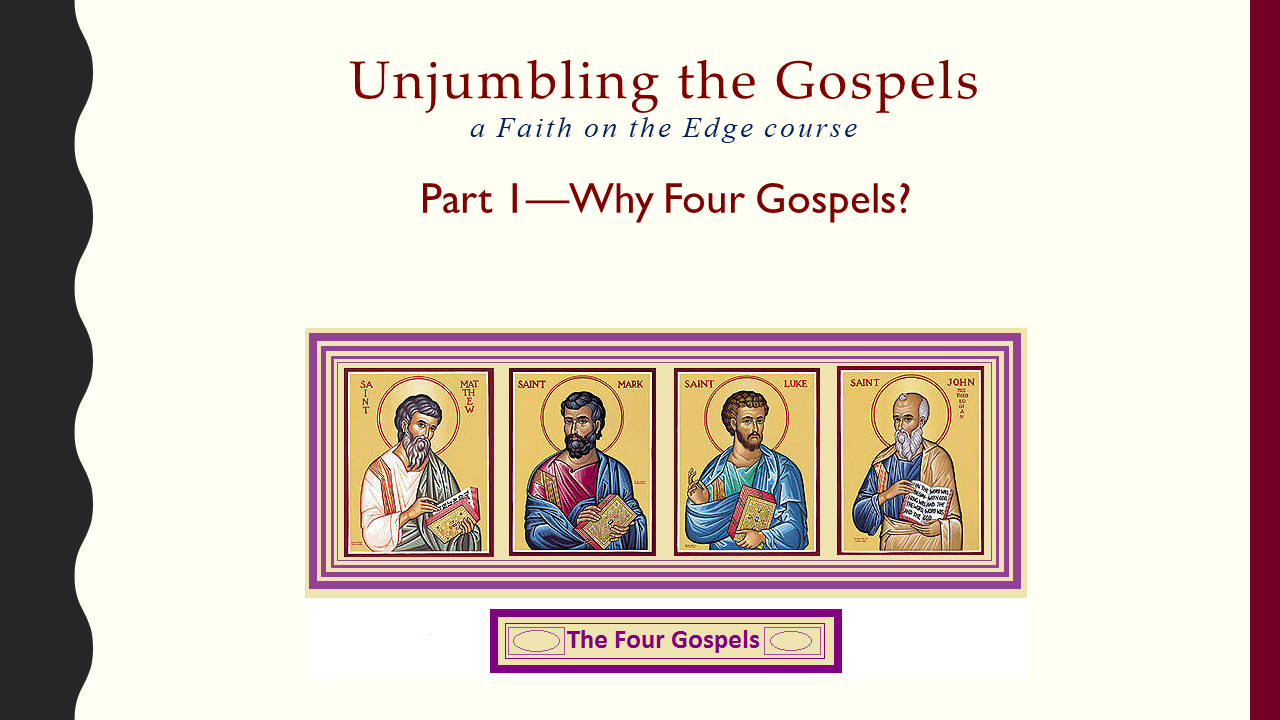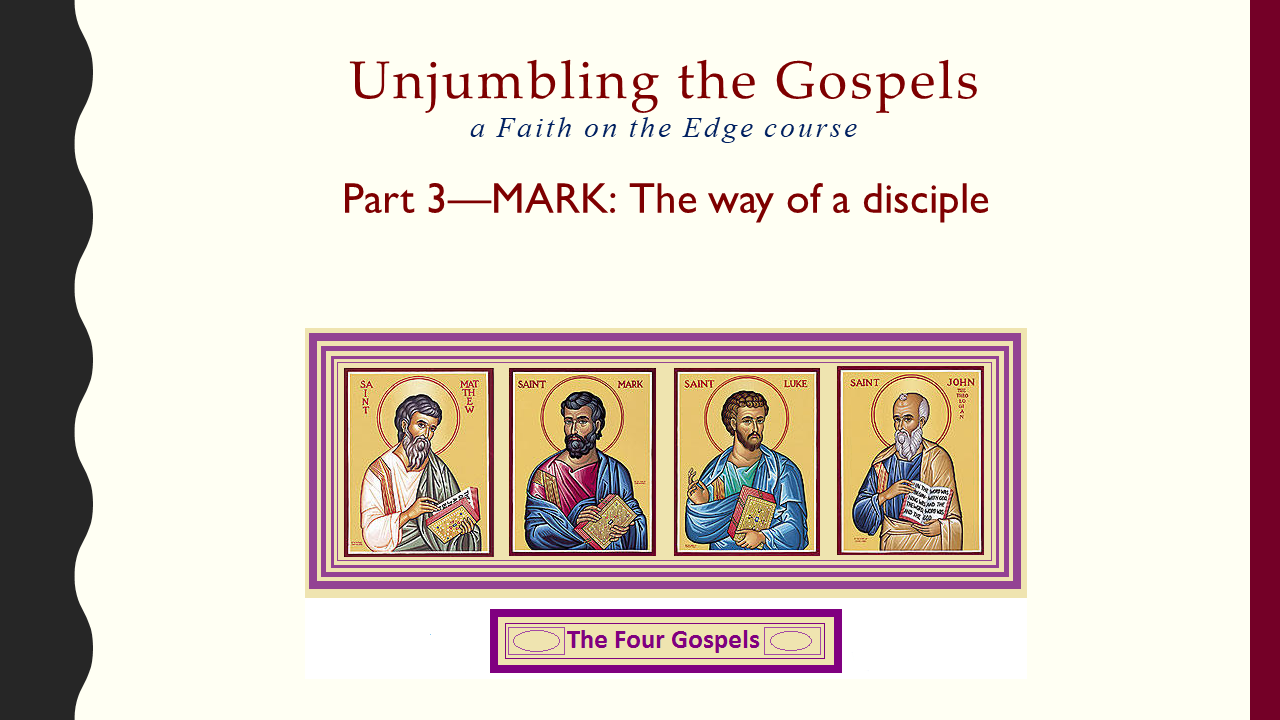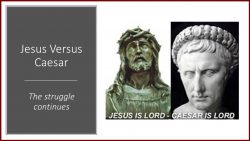Individual Unjumbling Videos
Part One: Why are there four Gospels and not just one?
This question arises out of confusing the Gospels with actual history, as though they depict the life of Jesus documentary style. Although often based on actual events, but not by eyewitnesses, they reveal purpose and meaning beyond the ordinary report of “he went there and said this.” Also, the Gospels arose from the specific needs of four communities of Jesus’ followers who were facing issues often very different from one another. Each Gospel was written from these unique perspectives. One Gospel could not possibly serve all four congregations. We will look carefully at each Gospel to determine the life situation it faced and how the Gospel writer addressed it.
Part Two: The source of confusion in our minds (and the way out of it)
Matthew, Mark, and Luke look very much alike on the surface, which is why we jumble them up in our minds. It turns out that Matthew and Luke compiled much of Mark almost verbatim into their Gospels, a major source of why we confuse them. But what at first appears as a recapitulation turns out to have either subtle differences in wording or an entirely different context which changes the meaning of the text, sometimes radically. (Why John shares very little (almost nothing) with them will be discussed at length.) The good news is that the very subtle differences in the Gospels shed much light on their very different purposes. When the Gospels are allowed to speak for themselves, they come to us as the unique stories they are.
Part Three: MARK
“The Gospel According to Mark” was the first of the canonical Gospels to be written. “Mark” (the unknown author) wrote to bolster a congregation that was under great stress from persecution from two sides—Rome and the synagogue. Some members had walked away from the faith, others were wavering. It is out of this life-threatening situation that Mark challenges his church to “take up their cross and follow Jesus,” a Jesus who never wavered in his commitment to God’s way. That “way” is spelled out for any who would follow Jesus regardless of the cost. Jesus becomes the example par excellence for disciples in these trying times. We will also note how the disciples are depicted, how the cross saves, and why the ending of Mark could be no other way, among many other gems from this Gospel.
Part Four: MATTHEW
“The Gospel According to Matthew” depicts a totally different situation than Mark’s congregation is facing. Matthew’s church is made up of Jewish followers of Jesus. They are trying to figure out how they fit into God’s plan for Israel now that they are rejected by their former Jewish brothers and sisters. “Matthew” draws upon the great traditions of Israel to help his congregation see that they are still very much a part of God’s people. By showing Jesus’ link to the great ancestors of Israel, and situating Jesus as a type of Moses who brings a renewed vision of the Law (Sermon on the Mount), Matthew casts Jesus as one who doesn’t start a new religion, but reinvigorates the present one. This leads his congregation into territory they thought they would never traverse—inviting Gentiles into God’s people. This Gospel is packed with great insights for us today.
Part Five: Luke—Negotiating the Roman Empire (with the help of Acts)
The apostles Peter and Paul have been executed by the Roman Empire, and James was stoned to death by the priestly authorities in Jerusalem. Nero burned Rome and blamed it on the Christians, and followers of Jesus can no longer look to the synagogues for shelter. Jerusalem was destroyed by the Romans in 70 AD. The Book of Revelation was written, in part, to comfort Jesus followers in times of great stress as persecutions were popping up over the Empire. Luke writes to assure the Roman authorities that Christians are no threat to the Empire, but are actually good citizens who engage in great acts of charity. Yet, a discerning reader will also pick up on how, in a nonrevolutionary way, the beginnings of the movement that would eventually overcome the Empire. Luke’s Jesus is very much the prototypical Greek who is idealized as the model of humanity. To follow Jesus leads to the highest expression of life lived for God.
Part Six: John—The incarnation of the Wisdom of God
When we get to the Gospel of John, we enter into an entirely different world from Matthew, Mark, and Luke. John’s world is informed by the Great Hellenistic ideals. Beginning with the very first verse we are introduced to the Logos, understood as the mediator between the divine and the creation. It also draws from the Wisdom tradition of the Hebrews in which the Logos is closely identified with Sophia/Wisdom. Proverbs 8 is a commentary on 1:1, where Wisdom is with God at the creation and is self-described as a “master worker.” Jesus, for John, is the incarnation of Logos/Wisdom. Consequently, the emphasis is on believing in Jesus which will bring eternal life now. How? Because Jesus mediates the wisdom of God to humanity. There are no apostles in John, only disciples; no institution of the Lord’s Supper, but several eucharistic moments; no parables, just extended speeches that impart wisdom from above. The Holy Spirit becomes the presence of Jesus in his absence, but he never leaves (is ascended). Love is held up as the highest of virtues and Christians will be characterized by their love of one another. The movement of this Gospel slowly discloses what a life characterized by wisdom looks like and achieves.
Part Seven: So, what Jesus emerges?
Matthew’s Jesus is a Jewish rabbi on the model of Moses who seeks to reform the Judaism of his day. Mark’s Jesus is a model of the faithful follower of God who doggedly follows the will of God (“the Way”) even if it means giving up his life in the process. Luke’s Jesus shows his congregation how to navigate the Roman Empire successfully by being non-threatening but valuable subjects doing many good works, as was Jesus. John situates Jesus as Wisdom incarnate so that his words should be seen as divine words. Was he a mere mortal (the Son of Man), although highly attuned to God, as in the Synoptics? Or is he divine, as in John? Was he full of emotion (Mark), or stoic (Luke)? Why so many different Jesuses? These and many other questions will be pursued as we look to pierce the veil that hides the historical Jesus from us behind these Gospels. Spoiler alert: We won’t find the historical Jesus, but we will find that every community and every age needs to articulate what Jesus means. This is progressive Christianity at its best.











